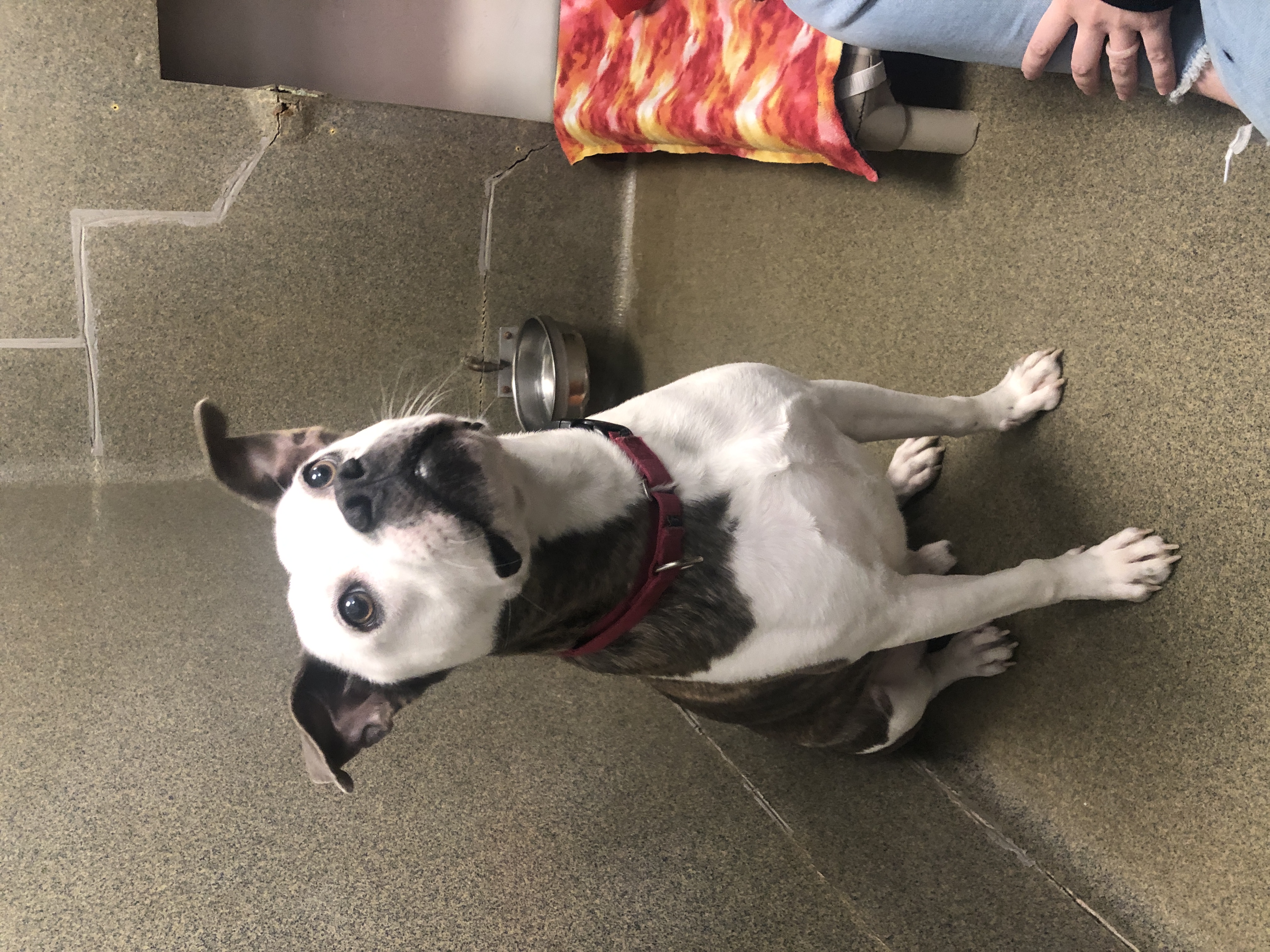Wednesday, January 24, 2024
A couple of years ago, Pam fostered a cat for selfish reasons: she had mice. The mice disappeared in short order but the cat is still with Pam. Fosters are like that: you might not intend to keep the animal more than a weekend or two weeks, but sometimes, you fall in love.
Why foster? One very good reason is there are fewer homeless animals being adopted.
“Arlington is following a national trend of seeing more pets surrendered to shelters than adopted,” said Chelsea Jones, Senior Communications Specialist at the Animal Welfare League of Arlington.
A lot of people adopted dogs during the pandemic, and didn’t necessarily think through the long term commitment pets need. “We get strays, and most of them truly got lost. But occasionally there are dogs that seem to have been abandoned,” said Jones. People feel ashamed that they want to turn in a pet. So pets get dropped off at the front door with no tags. “Which is too bad,” said Jones, “because it would be really helpful to know some background of the pet. Part of what we do is to make sure we are helpful to people struggling with pet ownership and also make sure people know they can come to us for help of any kind, including spaying and neutering if they need that.”
The second great reason for fostering is the support you get from an organization like AWLA. Not only does AWLA vet the dogs and cats before they let them go to foster homes, they provide the fostering coordinator’s phone number so they have a hotline for advice or concerns. They give as much information as they can on what to expect of this particular animal. They have a training team spend time with the dogs and cats to make sure they are suitable for fostering. They have an emergency “on call” number. As a result, about 25 percent of fostered pets are so successful in their foster homes that they end up getting adopted by them.
But for those pets that don’t continue on in foster homes and are returned to the AWLA kennel, the third great reason for fostering is the break that just a few days in a foster home offers an animal who is stressed by living in a kennel, with barking dogs, sterile surroundings, and constant noise. It’s like a weekend in a luxury hotel, or a vacation. The animal comes back much less stressed.
 ”Sonny” who has been in the shelter for more than a year. Sonny is a good natured dog who loves people, toys, and food. Chelsea Jones expressed disbelief that he has not been able to find a home yet.
”Sonny” who has been in the shelter for more than a year. Sonny is a good natured dog who loves people, toys, and food. Chelsea Jones expressed disbelief that he has not been able to find a home yet.
And importantly, foster homes make it easier for pets to find their forever homes, because the foster hands along important information about the dog or cat that the AWLA didn’t know before: he doesn’t like the vacuum cleaner, he loves children, he is good with other dogs but not with cats. This is crucial information to hand to a prospective adopter, and since most dogs arrive without a “dossier,” the foster family can help build a profile on the animal. “Their true personalities come out once they go to a foster home: a shy cat turns out to love sitting in your lap. It makes them more adoptable,” said Jones.
“Pet overpopulation is still an issue but this is also an area where the market is really over-saturated,” said Jones. “There are many organizations placing dogs and cats in the DMV. We have so many local dogs that we don’t have space for transfers from overcrowded shelters in other parts of the state.”
“There is a situation for everyone,” said Jones. “There are so many reasons to foster. It’s a great opportunity to have a pet without a long-term commitment. When you foster a dog or cat you are helping two animals: there will be room for another in the shelter. AND you’re helping AWLA, which is short-staffed, and every animal that goes out to a foster makes it a little easier to do the job with less staff. If you want to do something nice for a living creature, it’s an easy way to do that.”
To be a foster, applicants take a survey. AWLA gets a lot of foster applications from the Ballston/Clarendon area. Homes with fenced in yards are nice because the dogs love to run after being cooped up, but fosters can also live in apartments.
AWLA often does special fosters over the holidays, for instance, where you can pick up a pet for the ten days around the middle of December and return them (or not) after the holidays. “It is important to remember,” says Jones, “that it’s kind of like dating. Not every date leads to marriage. But when a foster family does keep the pet, it’s a very special time for the staff which has worked so hard to facilitate that forever match.”